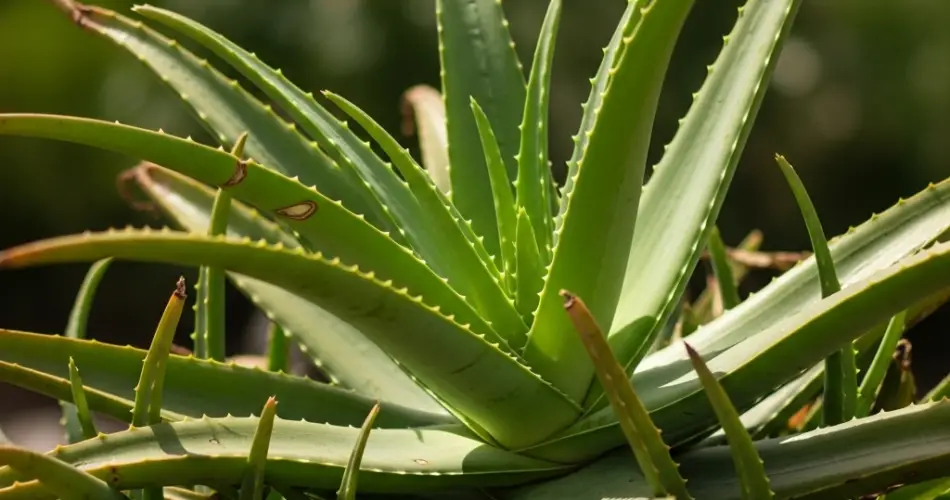Aloe vera is a hardy and low-maintenance succulent known for its soothing gel and ability to thrive with minimal care. However, like all plants, aloe vera can develop issues if its growing conditions are not ideal. Whether you’re noticing brown leaves, mushy roots, or a sluggish growth rate, identifying and addressing these problems early will help your plant recover and thrive.
Here’s a detailed guide to the most common aloe vera problems and how to fix them effectively.
1. Soft, Mushy Leaves
Cause: Overwatering or poor drainage.
Aloe vera is a desert plant that stores water in its thick leaves. If the soil remains too wet, the roots can rot, and the leaves may turn mushy and soft.
Solution:
-
Stop watering immediately and let the soil dry out completely.
-
Check for drainage holes in the pot. If the pot lacks drainage, repot your aloe into one that allows excess water to escape.
-
Use a cactus or succulent mix, or amend potting soil with sand or perlite to improve drainage.
-
Water only when the soil is completely dry—typically every 2 to 3 weeks depending on your climate.
2. Brown or Dry Leaf Tips
Cause: Low humidity, underwatering, or mineral buildup from tap water.
Brown tips can also develop if your aloe is exposed to excessive direct sunlight or sudden temperature shifts.
Solution:
-
Trim brown tips with sterile scissors if desired, but avoid cutting into the healthy tissue.
-
Switch to filtered or distilled water to avoid salt buildup.
-
Make sure the aloe is not placed too close to a heat source or drafty window.
-
Water deeply but infrequently, ensuring the soil dries out in between.
3. Yellowing Leaves
Cause: Overwatering, underwatering, or nutrient deficiency.
Yellow leaves can signal conflicting problems, so it’s important to assess the overall growing conditions.
Solution:
-
Feel the soil—if it’s soggy, overwatering is likely the issue. Let the soil dry thoroughly before watering again.
-
If the soil is dry and the plant looks shriveled, increase watering slightly, especially during hotter months.
-
Check the roots for rot—remove any damaged sections and repot if necessary.
-
Feed your aloe with a diluted succulent fertilizer once a month during the spring and summer.
4. Leggy or Stretched Growth
Cause: Lack of sunlight.
Aloe vera needs plenty of bright, direct sunlight to maintain its compact shape. When deprived, it may stretch toward the light source, resulting in a spindly appearance.
Solution:
-
Move the plant to a sunnier location—ideally near a south- or west-facing window.
-
Outdoor placement is ideal in warmer months, but protect it from excessive rain or cold.
-
Rotate the plant regularly to ensure even light exposure.
5. Leaves Turning Red or Pink
Cause: Sun stress or temperature extremes.
While some sun exposure is healthy for aloe, too much intense light can cause the leaves to turn reddish or pinkish.
Solution:
-
If the aloe is in direct sunlight all day, provide partial shade during peak hours, especially in very hot climates.
-
Gradually acclimate indoor plants before moving them outside to prevent sunburn.
-
Ensure the temperature remains between 55°F and 80°F (13°C to 27°C) for optimal growth.
6. Root Rot
Cause: Overwatering and poor drainage.
Root rot is one of the most serious problems for aloe vera and can be fatal if not addressed quickly.
Solution:
-
Remove the plant from the pot and trim off any black or mushy roots using sterile scissors.
-
Let the healthy roots dry for a day or two before replanting.
-
Use fresh, dry soil and a pot with drainage holes.
-
Allow the plant to rest without watering for a few days after repotting to avoid stressing the roots.
7. Pests (Mealybugs, Aphids, or Scale)
Cause: Infestation by insects attracted to sap.
Sticky residue, white cottony spots, or small brown bumps may indicate a pest problem.
Solution:
-
Isolate the plant to prevent spread.
-
Wipe pests off gently with a cotton swab dipped in rubbing alcohol.
-
Spray with neem oil or insecticidal soap weekly until the problem clears.
-
Keep the plant clean and dust-free to deter future infestations.
8. Slow or No Growth
Cause: Dormancy, lack of sunlight, poor soil, or a pot that’s too small.
Aloe vera grows slowly in winter or when it’s root-bound.
Solution:
-
Be patient—aloe vera has a natural dormancy period in cooler months.
-
Repot into a slightly larger container if the roots are crowded.
-
Provide more light and feed with a balanced succulent fertilizer in the growing season.
Final Thoughts
Aloe vera is tough, but it isn’t invincible. Most issues arise from overwatering, insufficient light, or poor drainage. With a few simple adjustments and regular monitoring, you can keep your aloe healthy and vibrant. Recognize the signs early, act quickly, and your plant will continue to grow strong and provide both beauty and healing benefits for years to come.



